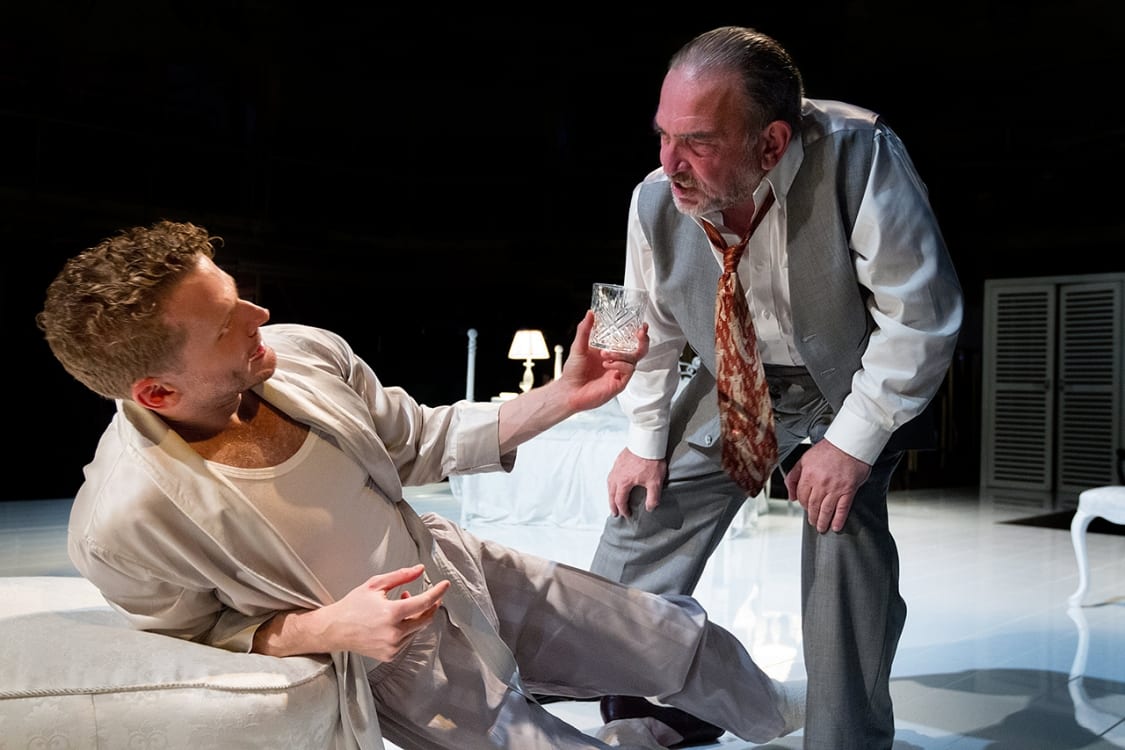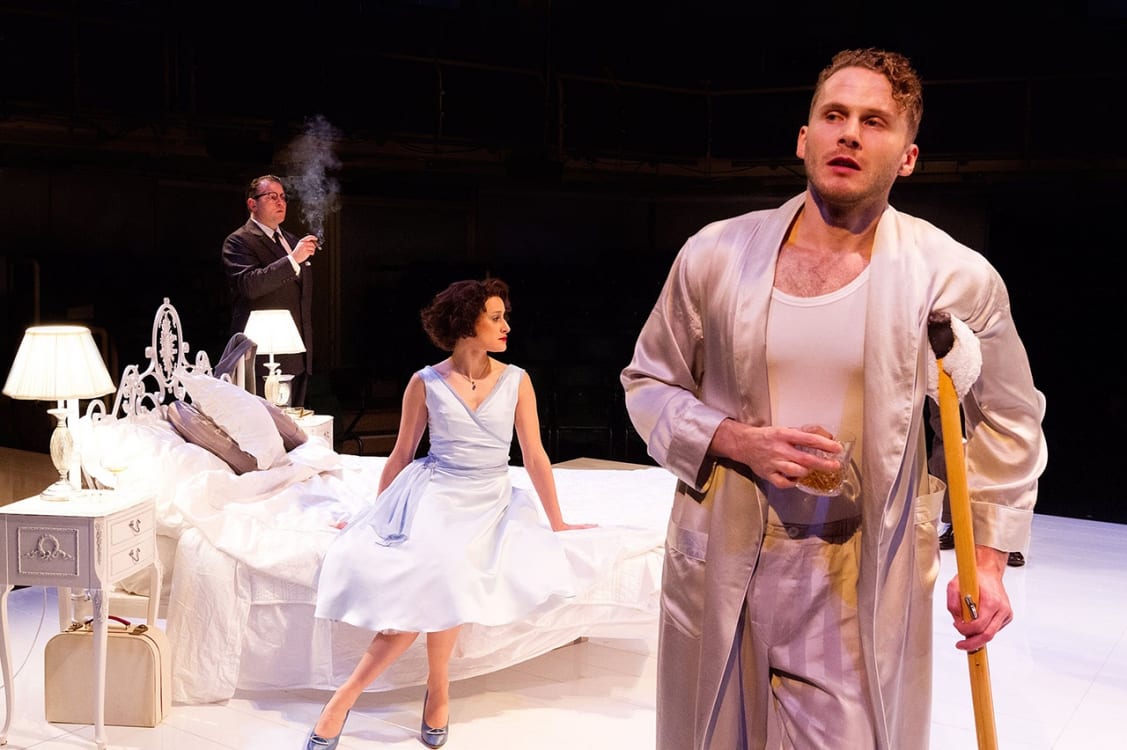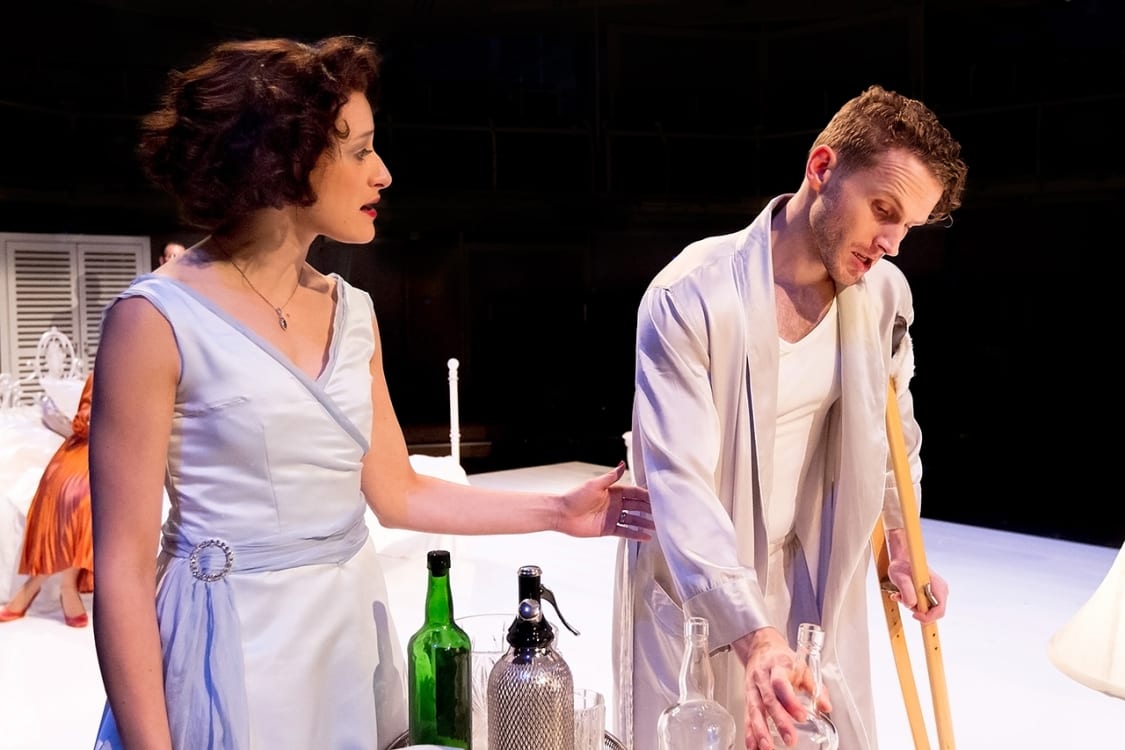The genre-smashing, cliché-bashing success that was Maxine Peake’s Hamlet was always going to be a hard act for the Royal Exchange’s to follow. Sure enough, despite Tennessee Williams’s raw, intense script and beautiful production design by Mike Britton, Cat On A Hot Tin Roof is a bit of a damp squib – not something you want around Bonfire Night.
Williams’s Pulitzer-winning play takes us under the skin of family groups in the American south of the 1950s. The story circles around wealthy cotton tycoon Big Daddy and oozes with gender clashes, greed, lies, sex (or lack thereof) and death. Does Big Daddy have cancer? Do his wife and family know the true cause of his illness and are they simply gearing up to grab his inheritance? And is his daughter-in-law Maggie unable to conceive – or is the problem that her husband Brick, Big Daddy’s son, cannot bear to be near her?
Director James Dacre has gone for naturalism with a bit of stylisation– and the stylisation works. Like the simple, stark white set, Maggie and Brick are dressed in white or icy, cold blues. This not only draws out their vulnerability and the ‘virginity’ of their relationship (for want of a better word), but also brings them together for their possible reconciliation in the last scene of the play. Most of the other adults wear greys and autumnal browns, seemingly wholesome and ‘natural’ compared with the cold of Brick and Maggie. The children at the party are in poster paint shades of bottle green and purple and make a gloriously sickening bunch, like the vilest of Wizard of Oz Munchkins.
The performances are not so artistic. Several members of the cast struggle with their deep south accents – and that’s not all. This play has an awful lot of very fast words in it, with a lot of repetition, and keeping up the variety and momentum throughout these is a task to far.
Mariah Gale has ‘feline’ moments in her performance as Maggie when she becomes the different sides of the ‘cat’: slinky and sensual, bitchy and backstabbing or ‘on a hot tin roof’ and desperately leaping up and down to stay afloat. But all too often she deflates just as you think she is warming into her role and thunders through her longer speeches.
Brick starts the play so silent in the face of his desperately chattering wife that his silence becomes aggressive and brutish. When he snaps and lashes out in rage or crawls pathetically on the floor when his crutch is snatched from him, it’s a shocking contrast. Aitken manages the latter moments well, but his silences lack much tension, meaning that Brick just appears a bit tired and confused for the first half hour of the play.
Big Daddy is the character who goes through the most stomach-churning emotional rollercoaster – reevaluating his life, his marriage, regaining hope and then having it dashed. O’Malley gives us some stunning outbursts but, like his co-stars, he seems to get bogged down in his wordier sections.
The other characters, without such verbal mountains to climb, provide some great caricatures – particularly Kim Criswell, the voluptuously permed Big Mama.
This is not a bad rendition of Cat On A Hot Tin Roof by any means, but it lacks momentum and a real sense of energy.



